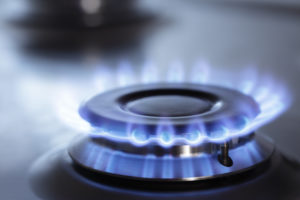 Natural gas fell in early European trading on Friday after jumping on Thursday as investors weighed a smaller-than-average inventory withdrawal against forecasts for cooler weather across large portions of the US over the coming week.
Natural gas fell in early European trading on Friday after jumping on Thursday as investors weighed a smaller-than-average inventory withdrawal against forecasts for cooler weather across large portions of the US over the coming week.
Natural gas for delivery in August traded 0.28% lower at $2.858 per million British thermal units at 08:09 GMT, shifting in a daily range between $2.866 and $2.852. The contract rose 3% on Thursday following a 1.3% jump the day before, and is currently up 0.6% for the week.
The Energy Information Administration reported yesterday that US natural gas stockpiles rose by 75 billion cubic feet in the week ended June 19th, 2 bcf below analysts consensus estimate and well beneath the five-year average gain of 86 bcf and the year-ago one of 110 bcf.
Total gas held in US storage hubs amounted to 2.508 trillion cubic feet, narrowing a surplus to the five-year average stockpiles of 2.473 trillion to 1.4%, or 35 bcf, from 1.9% a week earlier. Inventories were also at a surplus of 38.3% to the year-ago supplies of 1.813 trillion cubic feet, down from 42.9% during the previous week.
Initial estimates July 2nds report point to a stockpiles gain of around 70 bcf for the seven days ended June 26th, below the average of 75 bcf and a gain of 102 bcf during the comparable period last year, due to very high natural gas demand through most of the current week.
Comfortable conditions
Upside price movement, however, failed to decisively extend into Friday as yesterdays injection number was already largely priced in, while weather forecasts saw no significant overnight changes, calling for the arrival of cooler Canadian weather systems to significantly drop near-term cooling demand.
According to NatGasWeather.com, natural gas demand in the US will be moderate compared to normal during the next seven days. Recent high pressure that had driven the strongest cooling demand for the year will give way to a series of cooler Canadian weather systems which will begin sweeping across the central and eastern US today and last through July 4th.
This will result in comfortable temperatures across the Midwest and East, with highs mainly the 70s and lower 80s, while cooler air also spills into the Southeast to ease hot conditions of the past few weeks, resulting in maximum temperatures of mid 80s to lower 90s, slightly below average. The West, however, will continue to experience widespread highs in the 90s and 100s, becoming the countrys hottest region and remaining a source for strong cooling demand.
Additional Canadian weather systems carrying below-normal temperatures, showers and thunderstorms are anticipated to track across the central and eastern US going into the first week of July. Florida and portions of the Southeast Coast will be the only regions of the eastern half of the US that will be warmer than usual, significantly easing cooling demand compared to the current week, while the West remains very warm to hot.
The impact of these Canadian systems will be reflected in July 9ths inventory report, expected to once again show a much larger than average weekly build. The five-year average inventory gain for the week ended July 3rd is 75 bcf, while stockpiles jumped by 94 bcf a year earlier.
It will be important to watch whether additional Canadian systems can reach the central and eastern US during the second week of July, which would line up more above-average inventory builds, or high pressure across the East will strengthen once again to boost cooling demand. Data on the pattern remain inconclusive.
Readings
According to AccuWeather.com, the high in New York on June 27th will be 70 degrees Fahrenheit, 12 below usual, before jumping back in the low 80s as of June 29th. Chicago will fail to exceed 67 degrees today, 16 beneath normal, and highs will range in the 70s during the following five days.
Down South, readings in Houston will max out at 90-93 degrees through June 29th, compared to the average 91, followed by a few-degree cooling through the first week of July. To the West, Sacramento will see highs reach 99 degrees today, 9 above usual, before jumping to 103 degrees on June 30th.
Pivot points
According to Binary Tribune’s daily analysis, August natural gas futures’ central pivot point stands at $2.836. In case the contract penetrates the first resistance level at $2.899 per million British thermal units, it will encounter next resistance at $2.932.
If breached, upside movement may attempt to advance to $2.995 per mBtu. If the energy source drops below its S1 level at $2.803 per mBtu, it will next see support at $2.740. In case the second key support zone is breached, the power-station fuel’s downward movement may extend to $2.707 per mBtu.
In weekly terms, the central pivot point is at $2.859. The three key resistance levels are as follows: R1 – $2.958, R2 – $3.075, R3 – $3.174. The three key support levels are: S1 – $2.742, S2 – $2.643, S3 – $2.526.





